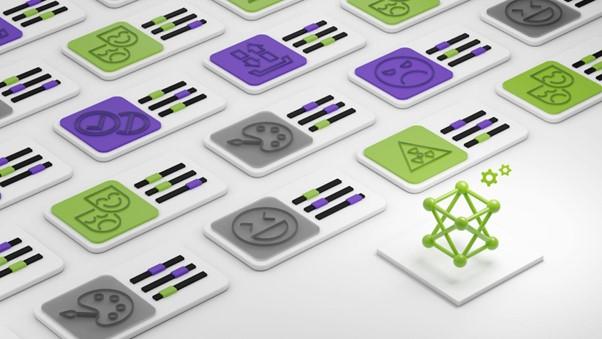In the ever-evolving landscape of artificial intelligence, 2023 has been a year of breakthroughs, bold ideas, and boundary-pushing innovations. From generative models that blur the lines between creativity and computation to algorithms that redefine decision-making, this year’s AI research papers have left an indelible mark on the field.As the curiosity around AI grows, so does the need to spotlight the studies that are shaping its future. In this article, we delve into ten noteworthy research papers of 2023—each a testament to the ingenuity and ambition of the global AI community. Weather you’re a seasoned researcher, a curious practitioner, or simply an AI enthusiast, these papers offer a glimpse into the cutting edge of what’s possible. Let’s explore the ideas that are not just advancing the field, but also reimagining the world as we certainly no it.
Exploring Breakthroughs in Natural Language Processing
In 2023, advancements in Natural Language Processing (NLP) continued to redefine the boundaries of AI’s capabilities. One standout study explored zero-shot topical text classification, leveraging large language models (LLMs) to categorize text without prior training on specific topics. This research, conducted by IBM, highlighted the potential of LLMs to perform effectively in scenarios requiring adaptability and generalization. Such breakthroughs pave the way for more efficient and versatile NLP applications,notably in industries reliant on text analysis[[1]].
Another notable focus was on automatic problem-solving steps capture, where NLP models were designed to analyze conversations and extract actionable insights. IBM’s work in this area demonstrated how models could identify and document problem-solving sequences in real-time, offering significant value in fields like supply chain management[[2]]. Below is a snapshot of key NLP breakthroughs in 2023:
| Breakthrough | Submission |
|---|---|
| Zero-shot Text Classification | Unsupervised topic categorization |
| Automatic Problem-solving Capture | Real-time action extraction |
| Text Parsing and Data Unlocking | Enterprise data analysis[[3]] |
Innovations in Computer Vision: Pushing Visual Boundaries
2023 witnessed groundbreaking advancements in computer vision, pushing the boundaries of how machines perceive and interpret visual data. Researchers explored innovative techniques to enhance real-time object detection, enabling applications like self-driving cars to navigate complex environments with unprecedented accuracy. One study introduced a novel neural network architecture that significantly improved image segmentation, allowing for precise identification of objects even in cluttered scenes. another paper focused on 3D scene reconstruction, leveraging advanced AI to create lifelike models from 2D images, which has immense potential in fields like virtual reality and autonomous robotics.
Key contributions from 2023 also include advancements in facial recognition and generative models. A standout research paper proposed a method to reduce bias in facial recognition systems, addressing critical ethical concerns. meanwhile, generative vision models achieved remarkable progress, with one study introducing a framework for creating hyper-realistic images from minimal input data. Below is a summary of some key innovations:
| Innovation | Application |
|---|---|
| Enhanced Object Detection | Autonomous Vehicles |
| 3D Scene Reconstruction | Virtual Reality |
| Bias-Free Facial Recognition | Security Systems |
| Generative Image Models | Creative Industries |
- Real-time processing improvements made computer vision systems faster and more efficient.
- Ethical AI advancements ensured fairness in facial recognition technology.
- Generative models opened new avenues for artistic and creative applications.

AI Ethics and Governance: Shaping the Future Responsibly
In 2023, the discourse around AI ethics and governance reached new heights, with researchers exploring innovative frameworks to ensure responsible development. from global cooperation initiatives like the OECD’s AI Principles to the EU’s ethics Guidelines for trustworthy AI, these efforts emphasize the need for coordinated action. Papers such as “Ethical Governance of Artificial Intelligence: An Integrated Analytical Approach” delve into the dual role of ethics in governance and governance in ethics, highlighting the importance of balancing technological advancements with moral considerations [[2]].
- Exploring the intersection of AI ethics and governance through multidisciplinary lenses.
- Addressing challenges like bias, transparency, and accountability in AI systems.
- Proposing actionable solutions for policymakers and tech developers alike.
| Key Focus | Examples from 2023 |
|---|---|
| Global Frameworks | OECD’s AI Principles, EU Ethics Guidelines |
| Ethical Challenges | Bias Mitigation, Algorithmic Transparency |
| governance Tools | Risk Assessment Models, Accountability Mechanisms |
These papers not only provide theoretical insights but also offer practical tools for implementing ethical AI practices. For instance, “Ethics, Governance, and Policies in Artificial Intelligence” synthesizes research on pressing issues, offering a comprehensive guide for stakeholders [[3]]. By integrating ethics into governance frameworks, these studies aim to create a future where AI serves humanity responsibly, fostering trust and innovation in equal measure.

Practical Applications: From Research to Real-World Impact
Artificial intelligence continues to bridge the gap between theoretical research and practical implementation, driving innovation across industries. from complex data analysis to problem-solving frameworks,the papers of 2023 have showcased AI’s ability to transform academic insights into real-world solutions. For instance, advancements in machine learning algorithms have enhanced predictive analytics, enabling industries to optimize processes ranging from healthcare diagnostics to supply chain management.These breakthroughs highlight how AI not only accelerates research but also fosters tangible societal impact.
Here are some key applications derived from 2023’s most influential AI research:
- Generative AI for academic content creation, reducing time spent on drafting while enhancing creativity [[3]].
- AI-driven data storage and computing power solutions, enabling faster and more efficient research workflows [[1]].
- Application of machine learning in information systems, improving data gathering and analysis for decision-making processes [[2]].
| Application | Impact |
|---|---|
| Predictive Analytics | Enhanced forecasting accuracy |
| automated Content Creation | Streamlined research documentation |
| Data Optimization | Improved efficiency in large-scale analysis |
Q&A
Q&A: Ten Noteworthy AI Research Papers of 2023
Q1: Why focus on AI research papers? Aren’t these just for academics?
A: While AI research papers might seem like the exclusive domain of scientists and engineers, they’re actually the blueprints for the future. These papers push the boundaries of what’s possible, influencing everything from art and medicine to transportation and climate solutions. Think of them as the seeds from which tomorrow’s innovations grow.
Q2: What makes a research paper “noteworthy” in 2023?
A: A noteworthy paper often combines three key elements: impact, novelty, and practicality. It could introduce a groundbreaking idea, solve a long-standing problem, or offer tools that others can build upon. In 2023, many papers also stood out for addressing ethical concerns or making AI more accessible and clear.
Q3: Were there any surprising trends in this year’s AI research?
A: Absolutely! This year saw a strong emphasis on AI alignment—ensuring AI systems act in ways that align with human values.Researchers also explored the intersection of AI with biology and neuroscience, creating models that mimic human cognition or aid in drug finding. And let’s not forget the rise of multimodal AI, which can process text, images, and audio all at once.
Q4: Can you give an example of a paper that stood out in 2023?
A: One standout was a paper on self-improving AI systems,which introduced algorithms capable of refining thier own code without human intervention.While this sounds like science fiction, it’s a step toward creating AI that can adapt and evolve on its own—exciting, but also a reminder to tread carefully.
Q5: Were there any papers that addressed ethical concerns in AI?
A: Yes, ethics was a major theme this year. A particularly influential paper tackled AI bias in decision-making systems, offering methods to reduce unfair outcomes in areas like hiring, lending, and law enforcement. Another explored the environmental impact of training large AI models, urging the community to consider sustainability.Q6: How do these papers affect the average person?
A: The ripple effects are everywhere. That chatbot you use? Likely built on ideas from a 2023 paper. The new AI art tool? Probably inspired by cutting-edge research. Even healthcare innovations, like AI-driven diagnostics, owe their progress to discoveries published this year. In short, these papers shape the tools and technologies we interact with daily.
Q7: What challenges do AI researchers still face?
A: Despite the progress, challenges remain. Interpretability—understanding how AI makes decisions—is still a hurdle. So is scaling AI without compromising fairness or sustainability. And, of course, there’s the ever-present question of regulation: how to ensure AI benefits society without stifling innovation.
Q8: what’s the takeaway for someone who isn’t an AI expert?
A: You don’t need to be an expert to appreciate the impact of AI research. These papers are shaping the future in ways both subtle and profound. Whether it’s a smarter phone, a safer car, or a more accurate medical test, the ideas in these papers touch our lives in countless ways. Staying informed helps us understand—and maybe even shape—the world we’re creating.
Q9: Where can I learn more about these papers?
A: Many papers are available on platforms like arXiv,google Scholar,or OpenAI’s research page. Some even come with accessible summaries or blog posts. Dive in—you might be surprised by how fascinating the world of AI research can be!
Q10: What’s next for AI research in 2024?
A: Expect even more focus on AI safety, human-AI collaboration, and real-world applications. Researchers are also likely to explore how AI can tackle global challenges, from climate change to education. Whatever the future holds, one thing’s certain: the ideas brewing in labs today will shape our tomorrow.
to sum up
As we close the chapter on this exploration of Ten Noteworthy AI research Papers of 2023, one thing becomes clear: the boundaries of artificial intelligence are not just being pushed—they are being reimagined.Each paper serves as a tiny fractal in the ever-expanding mosaic of innovation, offering glimpses into a future where machines and humans collaborate in ways once confined to science fiction. While 2023 has undoubtedly been a landmark year for AI, it’s merely a prologue to what lies ahead. The questions raised, the challenges tackled, and the possibilities unveiled in these papers remind us that the journey of discovery is as infinite as the algorithms we design. Whether you’re a researcher, a developer, or simply an AI enthusiast, let these advancements inspire you to think bigger, dive deeper, and embrace the unknown. After all, the next breakthrough is always just one paper away.


